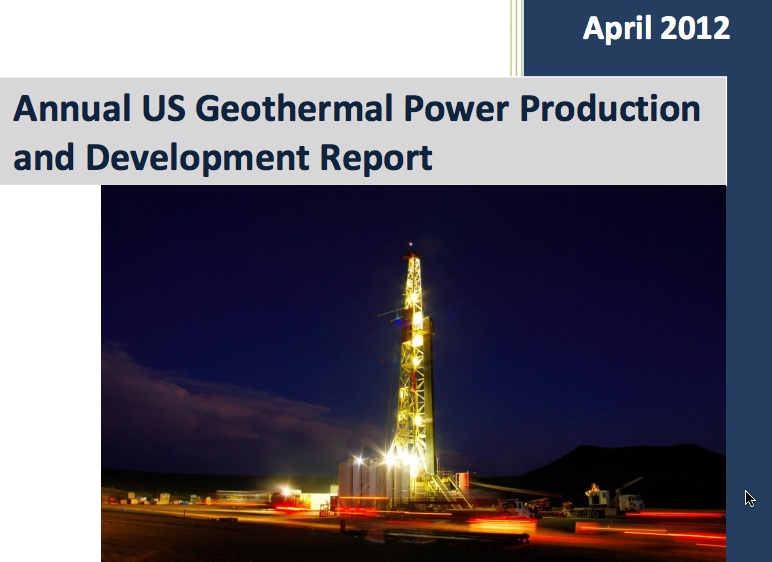GEA releases US Geothermal Market Update April 2012
The U.S. Geothermal Energy Association released its Annual U.S. Geothermal Power Production and Development Report today, highlighting slow but steady growth despite a challenging economy and inconsistent government policies.
In its Annual “U.S. Geothermal Power Production and Development Report” released today, the U.S. Geothermal Energy Association provides an overview on current development in the United States.
The report highlights that 91 MW of geothermal power generation capacity were added to the grid in the U.S. last year.
“Currently, geothermal electric power generation is occurring in eight U.S. states, including Alaska, California, Hawaii, Idaho, Nevada, Oregon, Utah and Wyoming. An additional seven states—Arizona, Colorado, Louisiana, New Mexico, North Dakota, Texas and Washington—have geothermal capacity in development. California continues to lead the way when it comes to geothermal energy. The Golden State ranks first in overall installed capacity, with 2,615 MW already online, and it has nearly 2,000 MW of capacity in development. Nevada is also ahead of the pack, with 59 projects currently in development, more than any other state.
The implementation of binary geothermal technology has enabled the industry to develop lower temperature resources, which has expanded the geothermal industry’s geographical footprint beyond California, especially in the last decade. “Demonstrating the abilities of geothermal systems to produce power from lower temperature systems, such as oil and gas coproduced geothermal, is pushing out the boundaries for geothermal power to encompass over a third of the U.S.,” said GEA Executive Director Karl Gawell.
“We’ve seen slow but steady growth for geothermal, even in a challenging economy. The drivers for that growth have been state renewable portfolio standards, federal tax credits, DOE demonstration project support, and the fact that utility scale geothermal energy offers clean baseload energy that’s competitive with other clean energy technologies,” Gawell said. “The geothermal industry looks to our policy leaders to provide a stable environment to foster growth that could lead the U.S. toward greater energy independence.”
Gawell continued: “With federal tax credits expiring at the end of 2013, many new geothermal power plants cannot count on federal help. Most plants need between four and eight years of lead time before the geothermal resource is on tap. As Washington debates whether or not to extend renewable energy tax incentives, the industry struggles to continue steady growth. Stable tax credit policies would further enhance this development. State policies also continued to support new development, but need to better recognize the full value of geothermal, particularly its contribution to the reliability of the power system.”
In the past year, capacity was installed by four different geothermal companies. Energy Source completed its 49.9 MW Hudson Ranch I project in Imperial Valley, Calif. during the first quarter of 2012, while Ormat Technologies finished 26 MW worth of projects over the past year. Terra-Gen completed a 1.9 MW expansion project in Nevada, and U.S. Geothermal expanded electricity generation at its San Emidio resource that replaced old generating equipment at the site with a new 12.75 MW power plant.
“As the economy strengthens, our industry is expected to bring even more geothermal capacity online in the coming years,” Gawell said. “In 2012, another 100 MW of capacity is expected to come online representing nearly one billion dollars of investment in the clean energy economy.”
“The US geothermal industry continues to be actively engaged in a faster growing world market, which is helping many companies through the slack in the U.S.,” Gawell noted. According to the Department of Commerce, geothermal is one of only two renewables that exports more than it imports in the United States. Geothermal equipment manufacturers and service providers exist in almost every state and are able to provide jobs in states such as Georgia and Oklahoma and then export goods abroad.”
The report is available via geo-energy.org
Source: GEA release


















